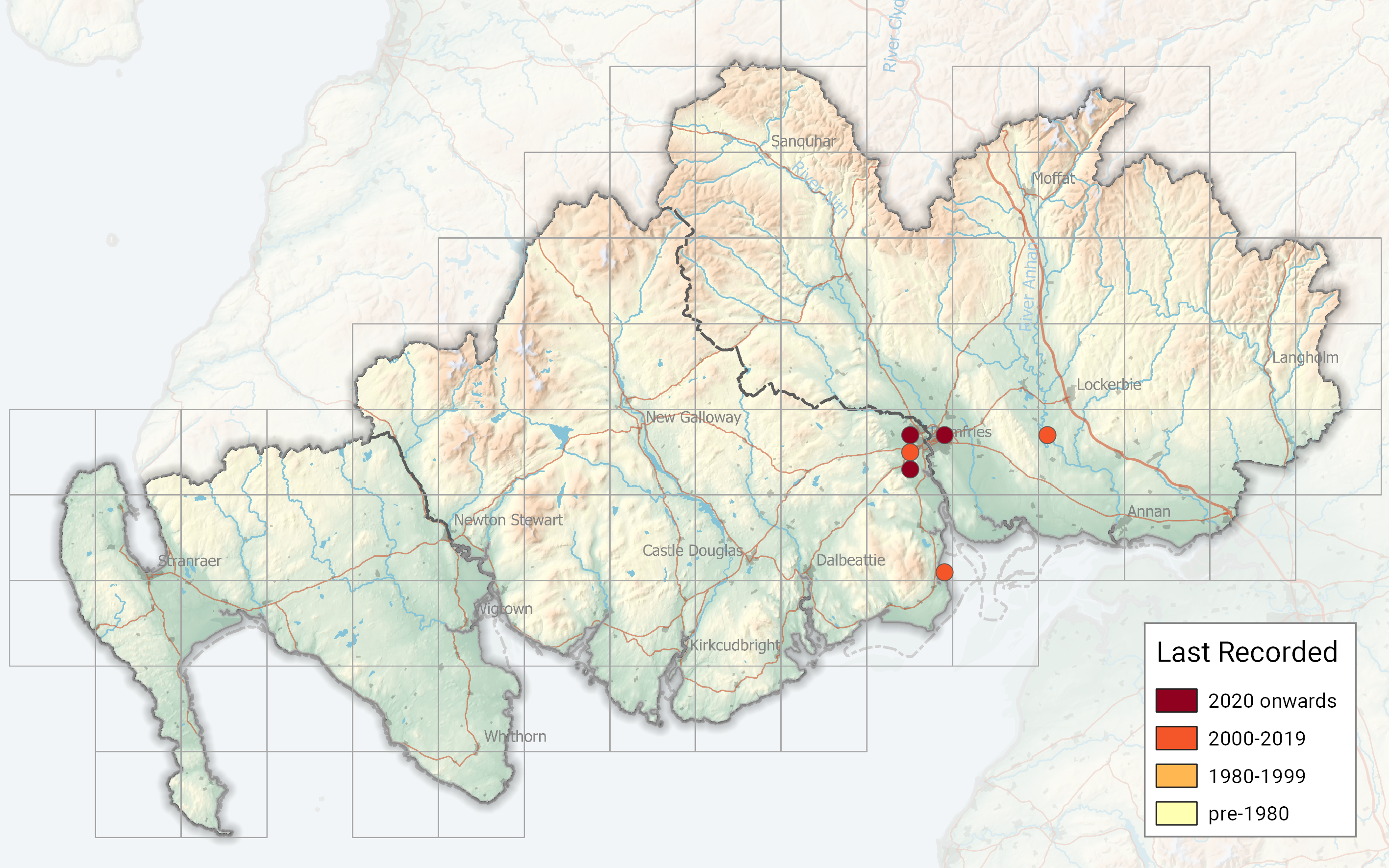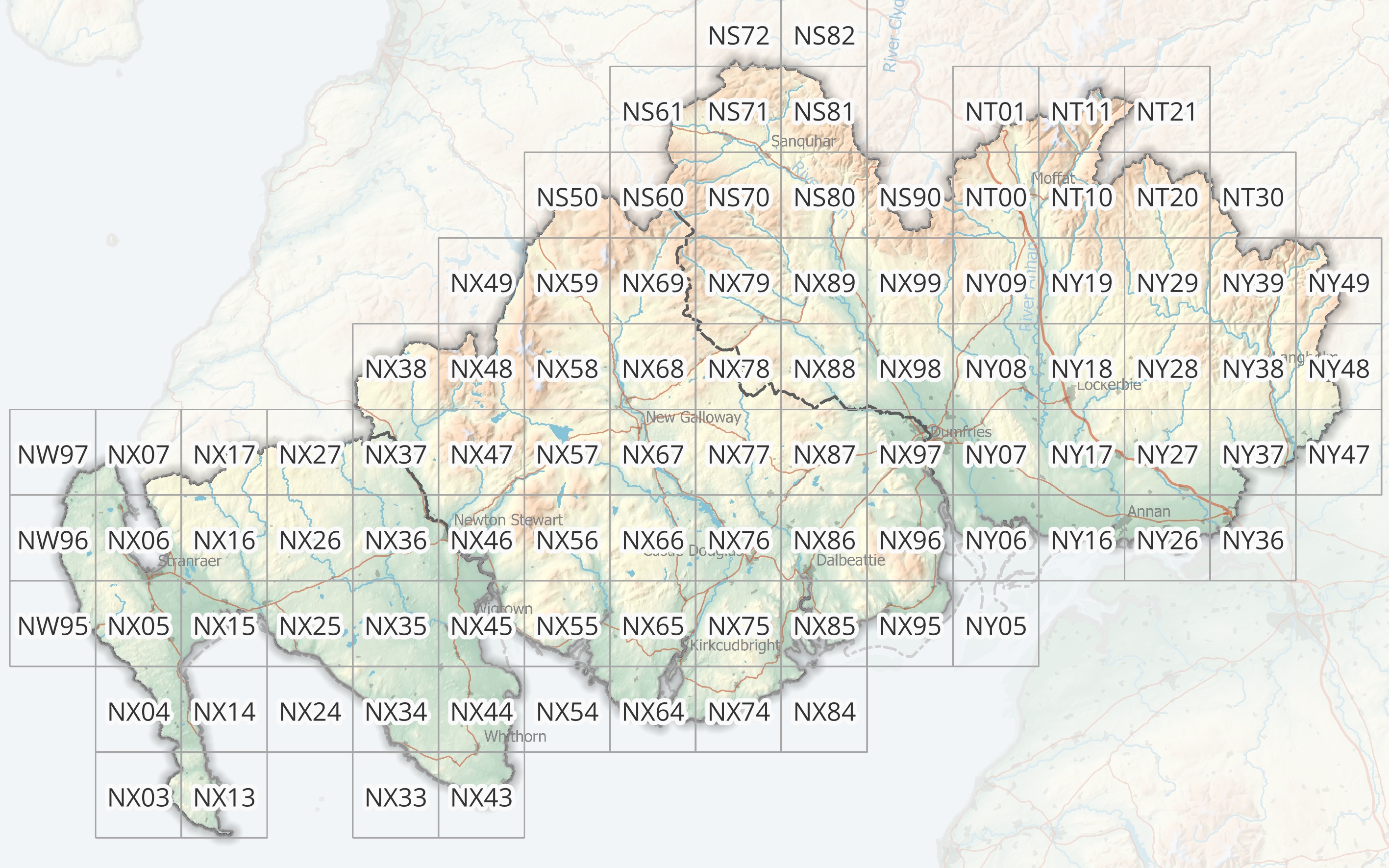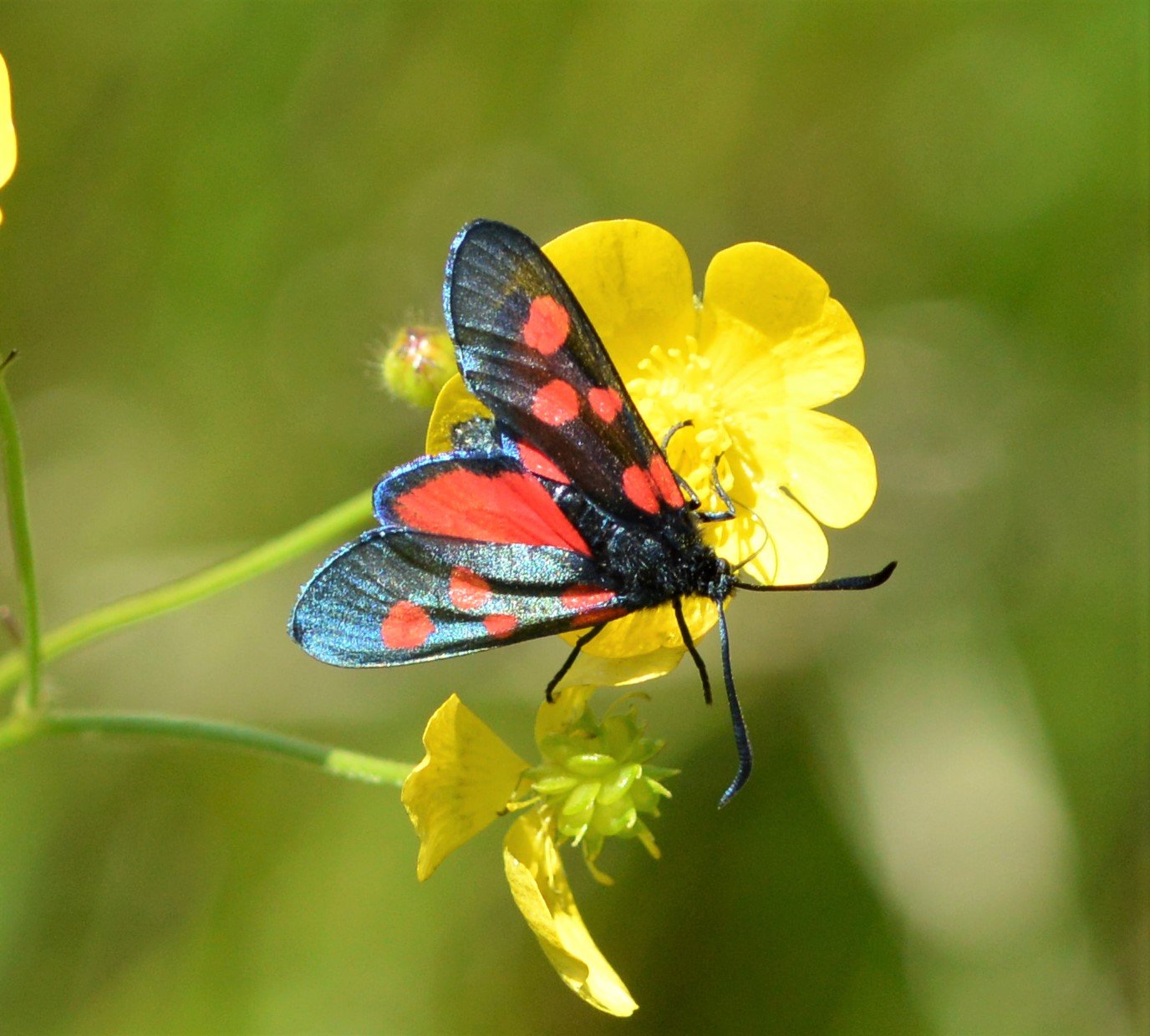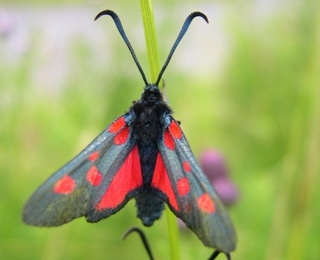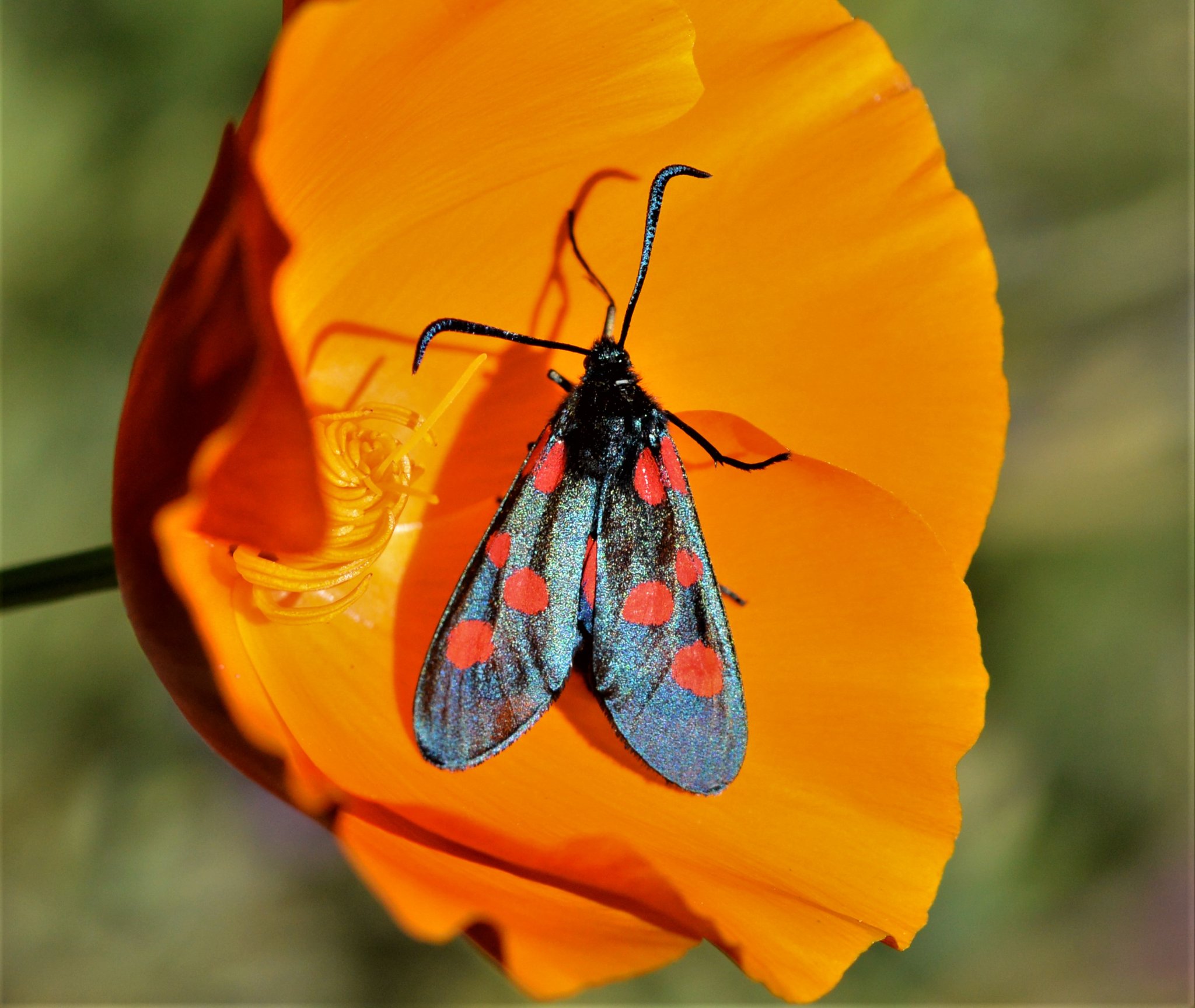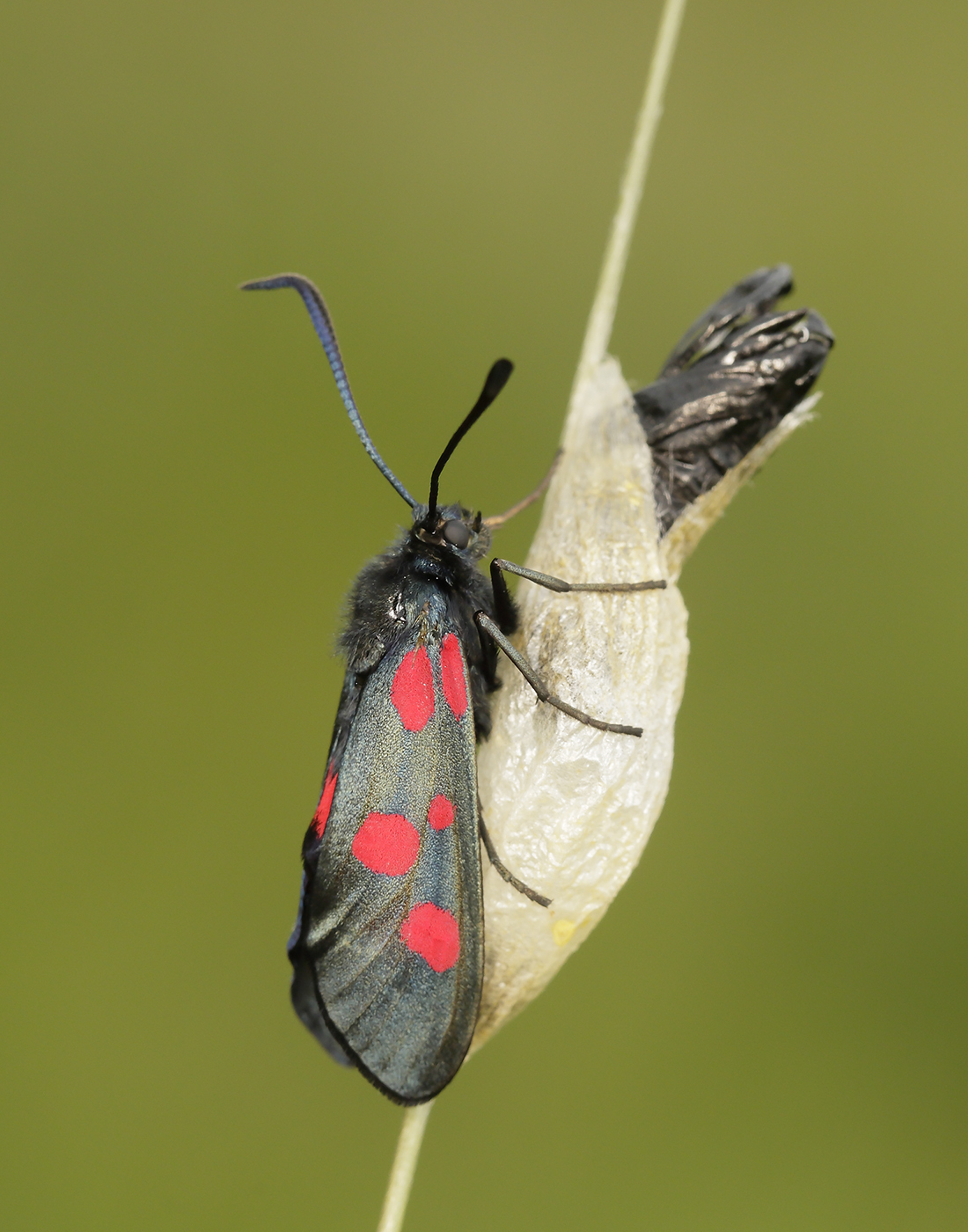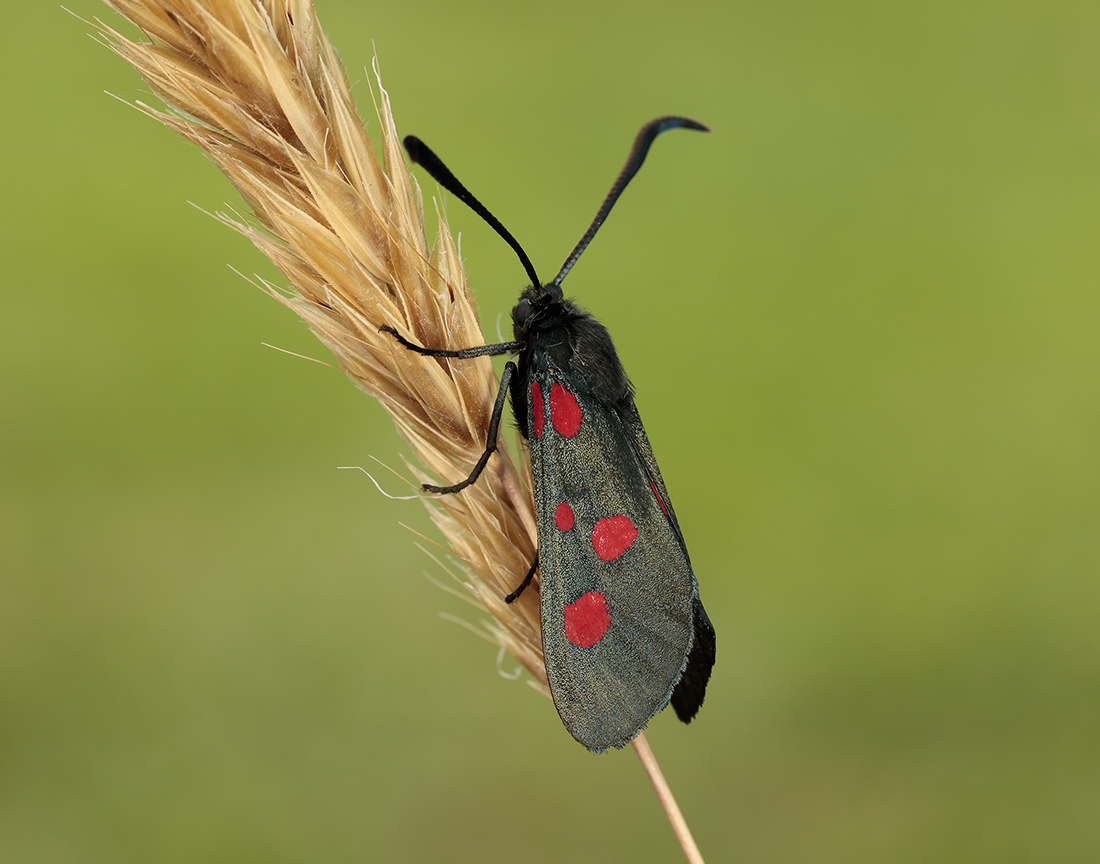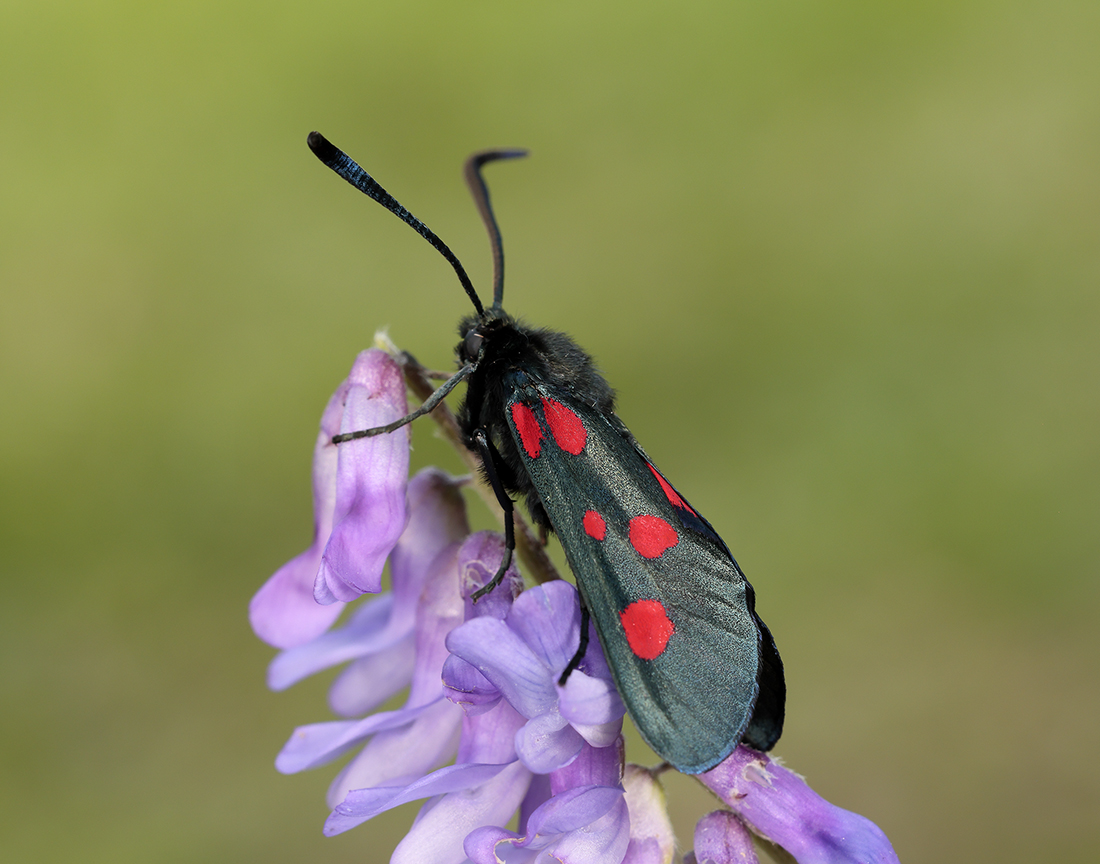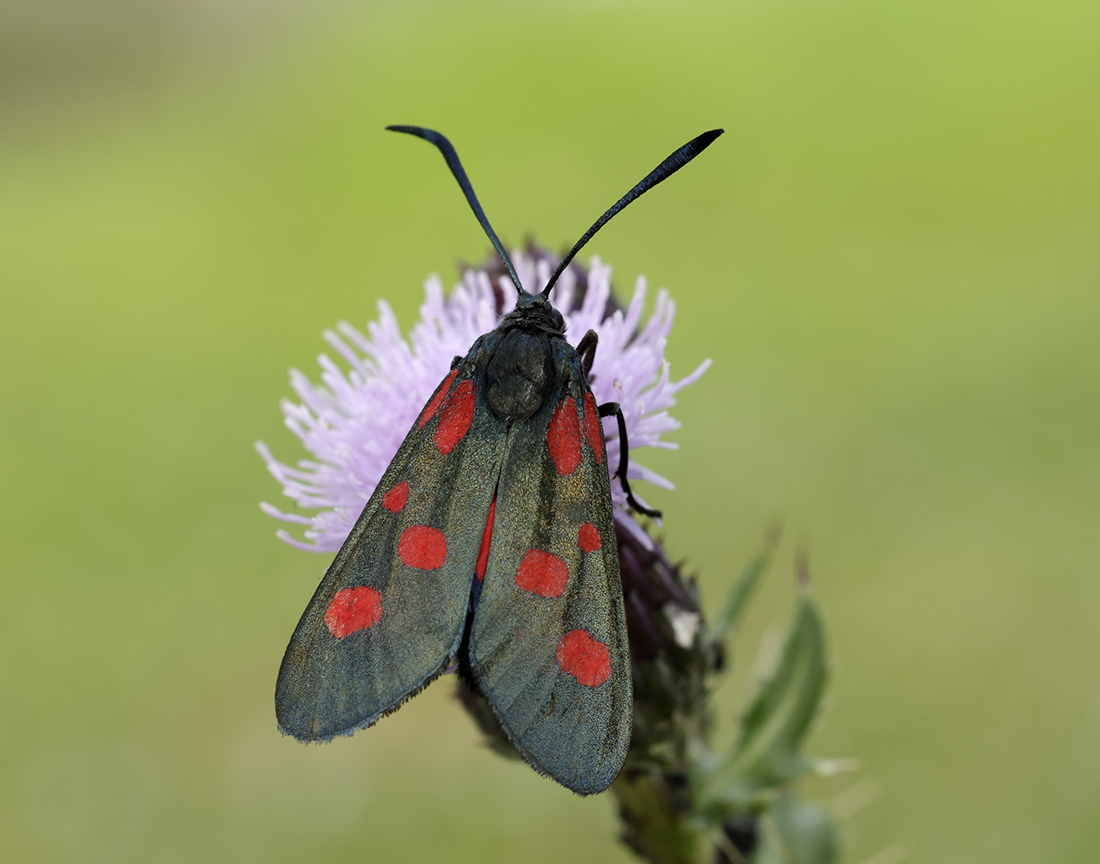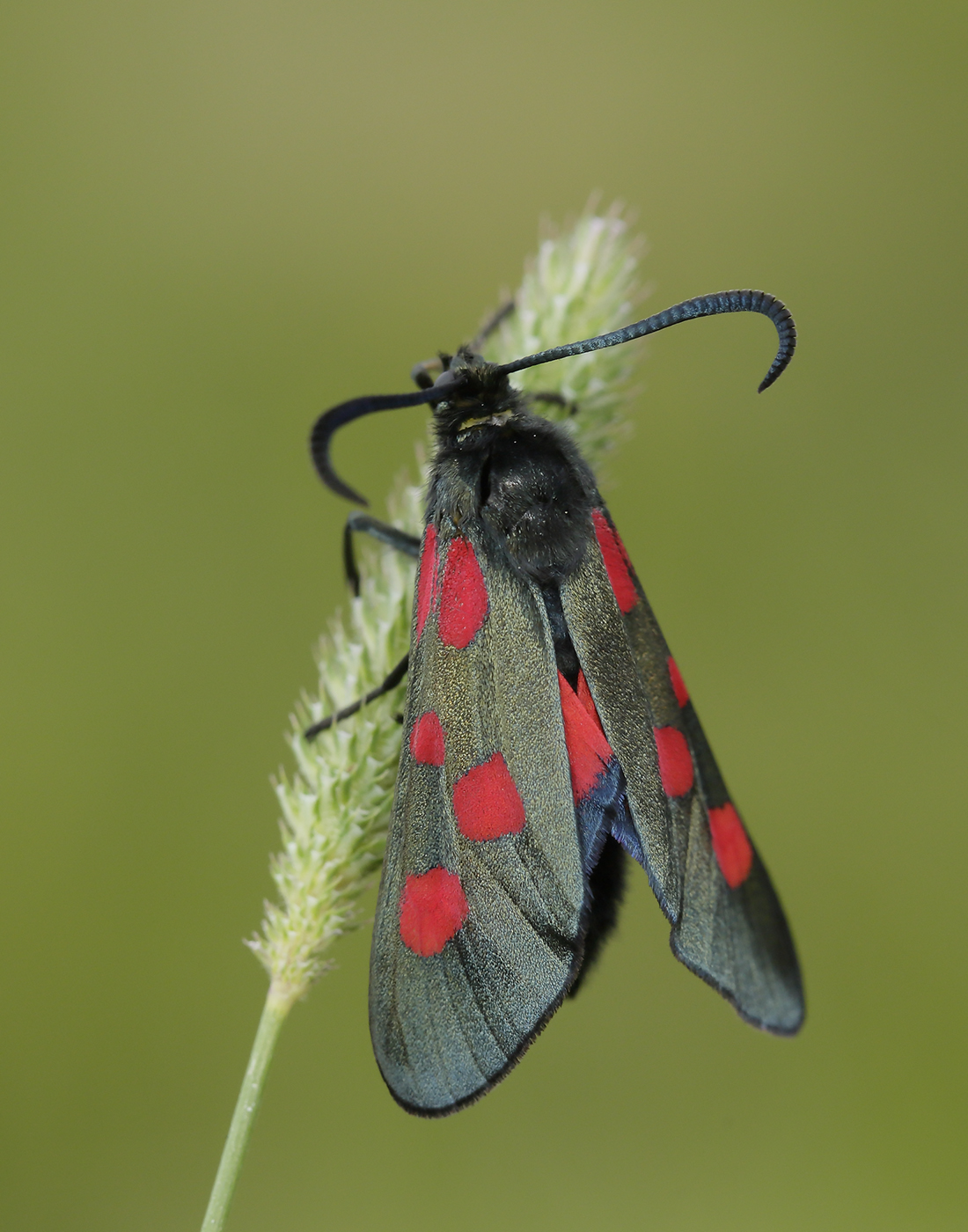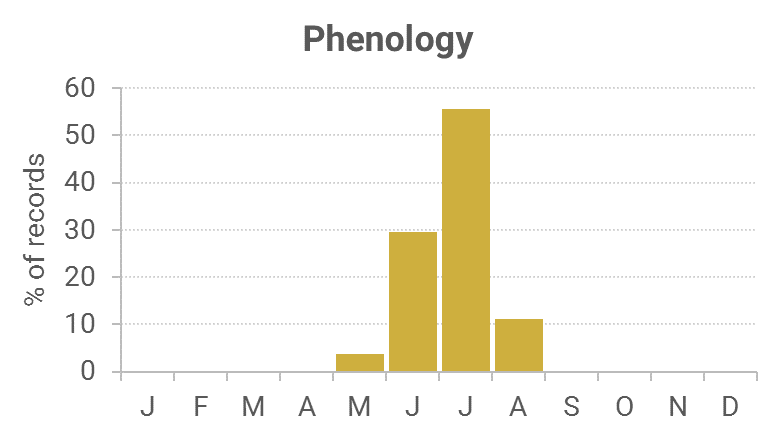Identification
Unmistakable, the only burnet moth in the region with five discrete red spots on the wing. The red and black markings serve as a warning to predators that the moth is toxic, releasing poisons such as hydrogen cyanide if attacked.
Recording Method.
A day-flying moth, flying particularly in sunshine. Spends much time feeding on flowers, even in cloudy weather.
Life Cycle
One generation. Overwinters as a larva. Larva August to June, pupates in an exposed cocoon on a grass or plant stem.
Larval foodplants
Meadow Vetchling, Greater Bird’s-foot-trefoil, Red Clover and Sainfoin.
Habitat
Roadside verges and flower-rich grassland.
History
The first Scottish colony was found in July 1993 by the roadside at Dalskairth, between Beeswing and Cargenbridge (VC73).
It was subsequently discovered at several other sites in lowland Scotland, and in July 2015 Birkshaw Forest near Lockerbie became the second site in Dumfries and Galloway, providing the first record for Dumfriesshire.

